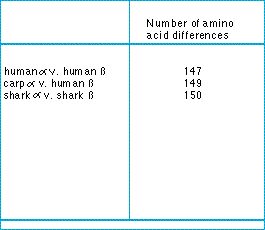Molecular evolution and neutral theory - Why is molecular evolution constant?

The Port Jackson shark
Molecular evolution in living fossils provides an example of the constant rate of molecular evolution and of the independence of molecular and morphological evolution.
The Port Jackson sharkHeterodontus portusjacksoni is a living fossil (there are fossils over 300 million years old that are very similar to the Port Jackson shark). Its molecules have been evolving very differently from its morphology.
Hemoglobin duplicated into a and ß forms before the ancestor of mammals and sharks, at the beginning of the chordate radiation. We can count the amino acid differences between a and ß-globin as a measure of the rate of molecular evolution in the lineages leading to the modern species. The figures show that changes have accumulated in the Port Jackson lineage at the same rate as the human lineage: the rates of molecular evolution in the two lineages are roughly equal.
This is to be compared with the large difference in the rate of morphological evolution in the two lineages: the Port Jackson shark lineage has hardly changed at all, but humans have evolved from fish-like ancestors, and passed through amphibian, reptilian, and several mammalian stages. This suggests that most of the evolutionary changes in the globin molecule have been neutral shifts among equivalent forms, of equal adaptive utility. While the rates of morphological change vary greatly among the various evolutionary lineages of vertebrates, the rates of molecular evolution all seem to have been more similar.
Amino acid differences between the a- and B-hemoglobins, for three species pairs. After Kimura (1983).
| Next |



